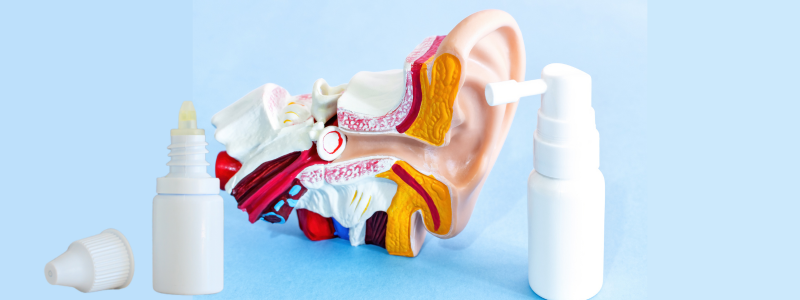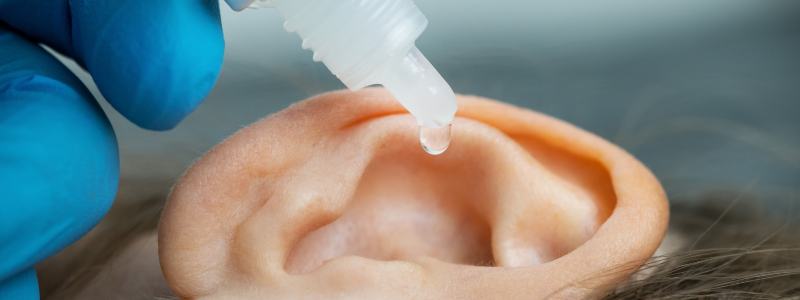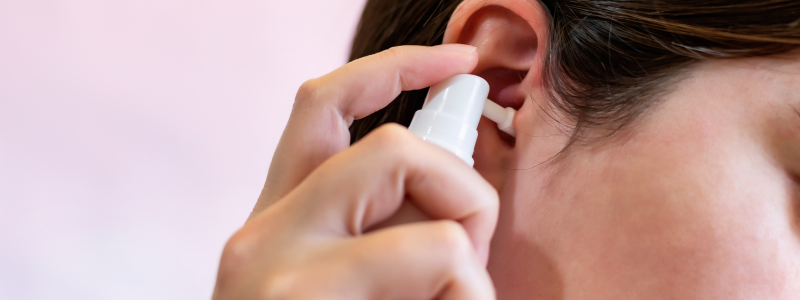Free home visits
with a local audiologist

Head of Online Medical Content

Audiology Expert at Hearing Aid UK

Earwax, while often considered a nuisance, plays a crucial role in safeguarding our ear canals against dirt, bacteria, and infections. Composed of oily secretions, dead skin cells, and dust, earwax keeps our ears clean and healthy.
Typically, earwax naturally migrates out of the ear canal, but occasionally it can become hard and excessive, causing a blockage. When we have a blocked ear the mass of wax can stop sound from reaching the eardrum, causing temporary hearing loss.
In this article we discuss the signs and symptoms of earwax blockage, what ear candles are, why they are not a good solution to the problem of earwax and how to safely deal with earwax at home.
Sometimes earwax can build up and become a problem. Symptoms of earwax blockage can vary in severity but often include a range of discomforts. Individuals with excessive earwax build-up may experience a feeling of fullness or pressure in the affected ear, reduced or muffled hearing, and a persistent ringing or buzzing sound known as tinnitus.
Earwax blockage can also lead to dizziness, ear pain, and even coughing or an itch in the throat, as the ear and throat are connected.
Understandably, these symptoms can be both uncomfortable and concerning. Consequently, people search for treatments to alleviate these discomforts and regain their normal hearing and ear comfort. However, it is essential to approach earwax removal with caution and use safe and proven methods to avoid potential harm.

In the quest for relief from earwax blockage, some individuals turn to ‘ear candles’ as a solution. Ear candles come in various types, including Hopi ear candles, ear cones, and natural/basic ear candles, each with a hollow "chimney" claimed to be designed to hold earwax.
The process involves lighting the candle, placing it in the ear, and relying on the apparent suction effect to remove earwax. This however is a claim that has not been proven and ear candles are not necessarily safe to use. Read on for the problems and damage ear candles can cause.
Is ear candling safe? The overriding answer is no. Despite the claims made by ear candle manufacturers, there is no scientific evidence when it comes to their efficacy. Many ear experts and healthcare professionals express scepticism regarding ear candling and research suggests they may do more harm than good.
Studies have shown that candle wax is more likely to be deposited into the ear rather than removing earwax. Additionally, attempts to replicate the claimed suction effect have yielded no measurable difference in patients or evidence of wax removal.
Can ear candles cause damage? Ear candles can cause significant harm to your ears and face. Common complaints include burns to the face and ear, blockage of the ear canal by candle wax, and even hot wax adhering to the eardrum, causing permanent damage. Notably, NICE (the National Institute for Health and Care Excellence) advises that:
‘The use of ear candles has no benefit in the management of earwax removal and may result in serious injury’.
Similarly, the NHS does not support or recommend ear candling as a safe or effective method for removing earwax or addressing ear-related issues. They generally advise against using ear candles due to concerns about their safety and the lack of scientific evidence supporting their claimed benefits.
Can I remove earwax safely at home? Yes, but we recommend seeking safe and regulated methods for ear cleaning. At home treatments are readily available over the counter for earwax blockage and there is a range of options for removing earwax build-up (for an article on such methods click here) all available from your local pharmacy.
Treatments such as ear drops, often containing ingredients like olive oil, can be used to soften hardened earwax, making it easier for the ear to naturally expel it. Your pharmacy can advise you on safely removing earwax at home, and which treatment might be right for you.
If there is still no improvement in hearing after using at home treatments mentioned above, there are procedures available to help. Audiologists can perform micro suction, a gentle and precise procedure that involves using a specialised tool to suction out the earwax, ensuring the ear canal remains unharmed.
Or, similarly, ear syringing can be performed by a healthcare provider. These options are safe, proven and gentle on the delicate ear canal, removing ear wax build up without causing harm or damage.

In the pursuit of healthy ears, it is crucial to prioritise, safe and healthy approaches to ear cleaning and wax removal. Ear candling lacks scientific backing and poses risks to your well-being. It is important not to resort to unnecessary and potentially harmful methods to clean the ears.
We recommend only using recognised products available from your local pharmacy and, if the symptoms persist, seek professional help.
For more advice on earwax removal, healthy ears or if you notice a change in your hearing contact us for further help on the form below or phone us free on 0800 567 7621 for more help. We have a network of audiologists who will be happy to answer any questions you have about safe earwax removal.
We don't recommend looking for ear candling near you, as there isn't enough research to back this earwax removal method. Remember that nothing smaller than your elbow should go into your ears unless administered by a trained ear specialist.
Your ears deserve the best care possible, and that means relying on safe and proven methods as recommended by audiologists. If you think your hearing has worsened, call us on 0800 567 7621 for professional help and advice.
 I have difficulty hearing in noisy places
I have difficulty hearing in noisy places  High-Pitched Sounds Like Birdsong Are Fading. Do I Have Hearing Loss?
High-Pitched Sounds Like Birdsong Are Fading. Do I Have Hearing Loss?  Asking people to repeat themselves frequently. Do I have hearing loss?
Asking people to repeat themselves frequently. Do I have hearing loss? Do not spend hundreds of pounds without getting a second opinion from us.
 Not only are the prices great, but the service is fantastic! Many thanks to your team.
Not only are the prices great, but the service is fantastic! Many thanks to your team.When we refer to a product as 'Latest Launch', we mean it is the latest to be released on the market.
When we refer to a product as 'New', we mean that the product is the newest hearing aid model on the market.
When we refer to a product as 'Superseded', we mean that there is a newer range available which replaces and improves on this product.
When we refer to a product as an 'Older Model', we mean that it is has been superseded by at least two more recent hearing aid ranges.